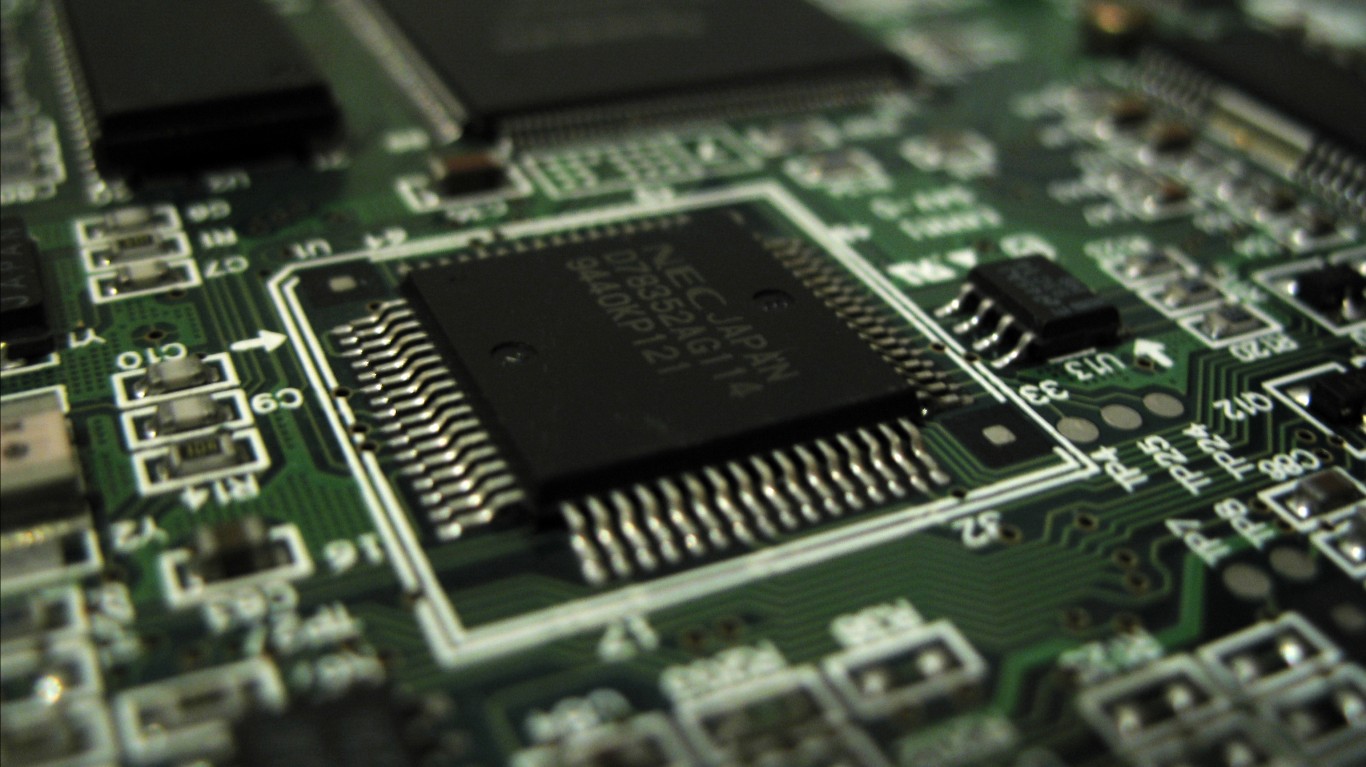Technology
How Much Upside Is Too Much for Intel, AMD and Nvidia?

Published:
Last Updated:

Many investors prefer to invest in the fourth quarter of a given year because there is so much that can happen late into the year. Companies and governments tend to spend their money and make plans for the coming year. With news that the ongoing China trade war is about to get a phase one passage, at least some fears about the national and international technology leadership will be hurt in 2020 have started to give way as the Dow Jones industrials, S&P 500 and the tech-heavy Nasdaq have all been putting in new all-time highs.
While much of the gains in the stock market in 2019 look extreme, one could argue that the moves may be artificial since January of 2019 started off of such a negative fourth quarter that was worse than many investors have seen. At this point, many stocks are up huge in 2019, and they are up big even versus right before the tremendous selling pressure that was rattling the markets in late in 2018.
It is fair to ask just how much credit that the makers of the brains behind the world’s top devices should really be worth. Hardware makers sometimes are not valued as much as other areas in technology, but the brains behind the future of technology go way beyond laptops, smartphones and desktops. Up for grabs in the years ahead is endless business from data center orders for processors and chipsets. Ditto for artificial intelligence (AI), virtual reality, augmented reality, driverless cars and trucks, smart devices, connected homes and offices, and everything that makes up the Internet of Things.
The question to ask is whether some of the major technology companies have seen their shares run too much, and whether it’s fair to expect a further run higher in 2020. The trifecta of leadership in processors, chipsets and graphics brings up a perfect case. The Dow was up about 20% and the S&P 500 was up about 25% so far in 2019, but respectively they are up “only” about 10% on the Dow and 14% on the S&P from this time in 2018.
Technology leadership is currently loved by investors, and analysts have been driving up their target prices on many tech leaders since earnings season contained far fewer panic-reports than expected. 24/7 Wall St. has tracked many analyst upgrades and given consensus target prices from Refinitiv, but we also have included how so many analysts have chased their targets higher and higher as their firms begin to issue big economic and market forecasts for 2020.
Intel Corp. (NASDAQ: INTC) shares were last seen at $58.13, in a 52-week range of $42.86 to $59.59. The consensus price target is $56.53. Its shares were last seen up 24% year to date and up about 21% from a year ago. Here are some of the price hikes and ratings notes issued since the last week of October after earnings:
Shares of Nvidia Corp. (NASDAQ: NVDA) were trading down 2% at $207.96, compared with a 52-week range of $124.46 to $213.35. The consensus price target is $231.24. The stock has seen a gain of 59% year to date, but that gain is only about 5% from a year ago, and it was a $280 stock before the fourth quarter of 2018. Despite earnings and guidance not drawing investors in further, we tracked a mountain of analysts all trying to climb over each other with price target hikes for Nvidia.
If you marry up the research reports, there is a sense that Nvidia’s strong data center revenues and robust guidance support optimism around the data center business. Also a plus is that game console seasonality’s drag is not enough to keep Nvidia down as data center growth, AI and other trends are supporting far higher share prices for the company. Here were some of the calls issued late last week:
Advanced Micro Devices Inc. (NASDAQ: AMD) shares traded up 3% at $41.13, in a 52-week range of $16.03 to $41.20. The consensus price target is $35.33. AMD shares have risen a massive 116% year to date and 85% from this time a year ago. That said, the current price is up about 32% from the prior annual high of about $31 seen in September of 2018.
As for AMD, analysts have driven up their target prices since its earnings report last month. Rosenblatt is now the street-high target at $52, after an already aggressive $42 target. On October 21, Morgan Stanley raised its target on AMD to $32 from $30 while just maintaining an Equal Weight rating. These are other more recent analyst calls:
Just because stocks already have risen does not mean that they cannot rise further. If you add up the market capitalization rates of all three of these companies, it comes to a combined $430 billion for the companies making most of the brains that power the devices. Even adding in Qualcomm and Broadcom only adds in another $225 billion or so in market capitalization, only about 20% higher than Facebook and nowhere close to the market caps of Amazon, Alphabet, Microsoft and Apple.
Thank you for reading! Have some feedback for us?
Contact the 24/7 Wall St. editorial team.